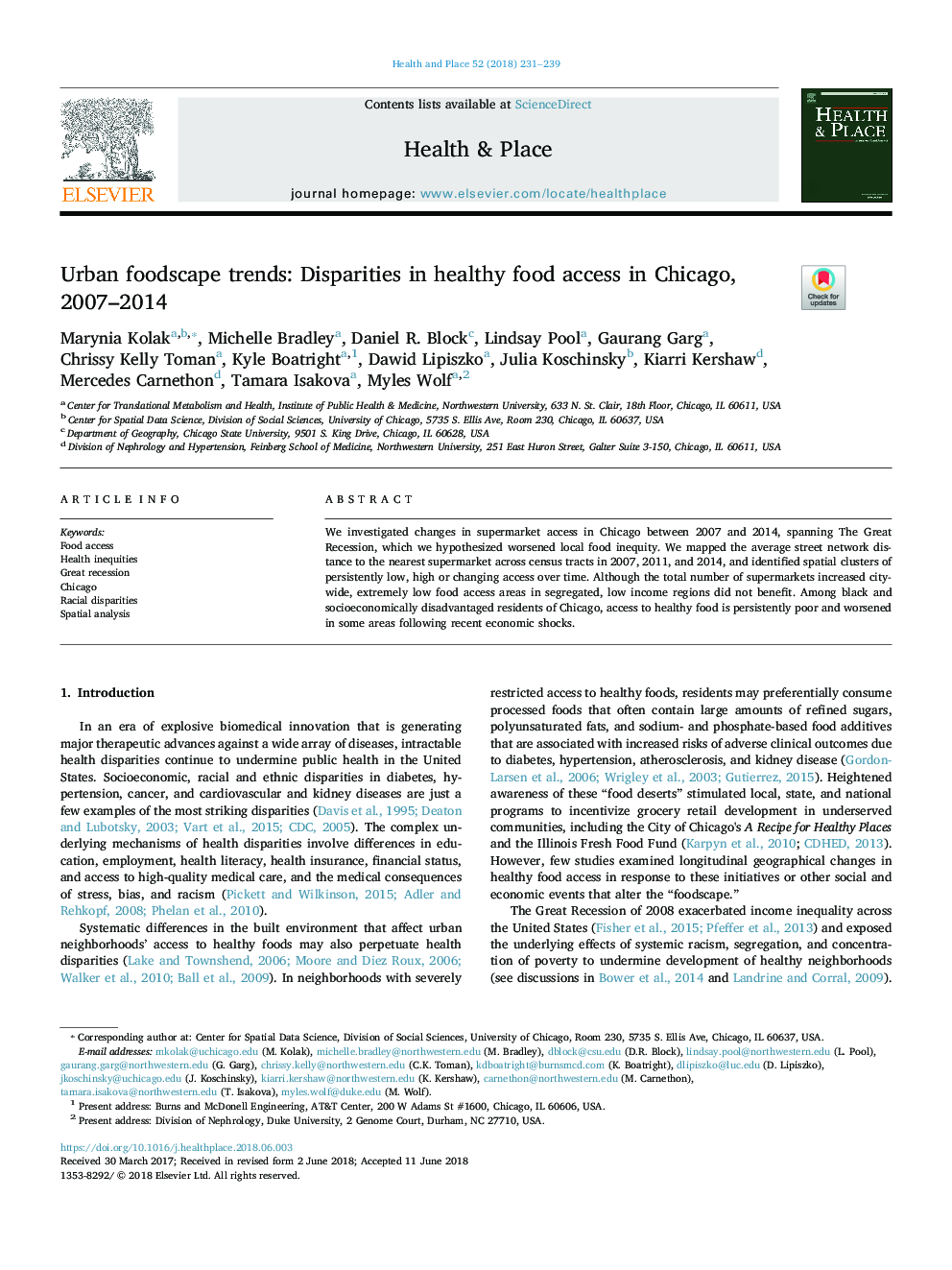| Article ID | Journal | Published Year | Pages | File Type |
|---|---|---|---|---|
| 7456809 | Health & Place | 2018 | 9 Pages |
Abstract
We investigated changes in supermarket access in Chicago between 2007 and 2014, spanning The Great Recession, which we hypothesized worsened local food inequity. We mapped the average street network distance to the nearest supermarket across census tracts in 2007, 2011, and 2014, and identified spatial clusters of persistently low, high or changing access over time. Although the total number of supermarkets increased city-wide, extremely low food access areas in segregated, low income regions did not benefit. Among black and socioeconomically disadvantaged residents of Chicago, access to healthy food is persistently poor and worsened in some areas following recent economic shocks.
Related Topics
Health Sciences
Medicine and Dentistry
Public Health and Health Policy
Authors
Marynia Kolak, Michelle Bradley, Daniel R. Block, Lindsay Pool, Gaurang Garg, Chrissy Kelly Toman, Kyle Boatright, Dawid Lipiszko, Julia Koschinsky, Kiarri Kershaw, Mercedes Carnethon, Tamara Isakova, Myles Wolf,
